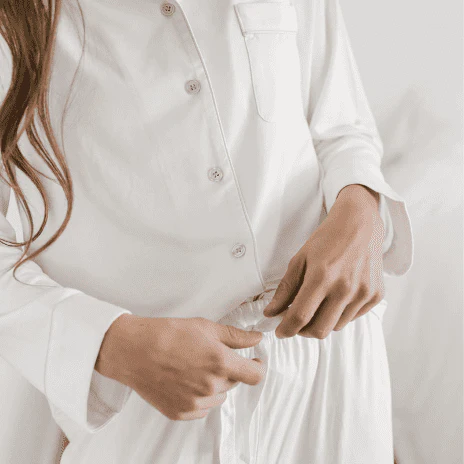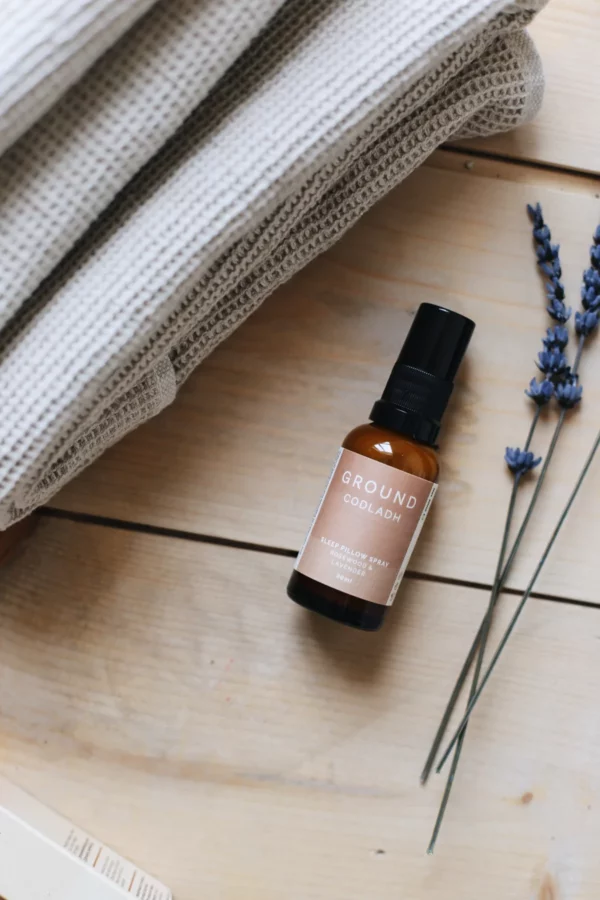
Spring is officially here and it’s starting to get a bit warmer (even if it is raining) – so you may be thinking about switching up your pyjamas and bedding!
We all value a good night’s sleep but with the unpredictability of the British weather – especially during transitional periods – it can be difficult to achieve the right sleeping environment.
Below, experts from M&S Menswear and M&S Home share their advice on how to achieve a comfortable night’s sleep from sleepwear, to bedding, to laundry.

1. Check the material of your pyjamas
With recent research carried out by M&S finding that one in five (22%) opt to wear nothing to bed, the experts at M&S Menswear have revealed why you should consider making the switch…
“Pyjamas can help with temperature regulation, helping you cool down in summer and warm you up in winter. This also makes them a key option for these transitional periods when the temperatures begin to change with the seasons. Cotton is the most popular fabric for pyjamas. It’s lightweight, breathable, and cool to wear. The natural cotton fabric of pyjamas is comfortable, cosy and does not irritate the skin.
“Cotton absorbs sweat from the skin and evaporates it from the surface quickly, which helps in cooling down the body. It also keeps you warm in cold weather because of its ability to retain your heat better than synthetic fabrics, making it the ideal material for unpredictable weather in spring.”

2. Know when to switch your duvet tog
Many will have a summer and winter duvet, but how do you know when to make the swap? Lydia Lloyd, Textile Designer at M&S Home offers her advice.
“As we transition between seasons, it can be difficult to know when to swap your winter bedding out for summer bedding, especially as the weather can be so unpredictable.
“Generally, around the end of March or beginning of April is the best time to make the seasonal bedding switch to lighter layers. When you notice yourself feeling warmer when going to bed or when you first wake up, this can be a good indicator that it is time to switch to a lighter duvet. We recommend opting for a duvet with a tog of 4.5-7 for those spring and summer months.
“If a cold snap comes after you’ve made the switch to your summer duvet, try adding a thicker, fleece throw to your bedding or alternatively opt for fleece-lined bed sheets and pillows to add an extra layer of warmth without needing to change your duvet.”
“If the weather takes a turn before you’ve had time to swap your winter duvet out, remove thick, fleecy layers and instead opt for a waffle throw as a lighter layer.”
3. Opt for breathable bedding
Lydia adds: “As well as choosing the right tog for your duvet, choosing the right materials for your bedding is key if you want to regulate your body temperature at night time.
“Something to consider when deciding on your bedding is the size of your bedroom. If your room is particularly small and you sleep with the windows closed, heat can often get trapped. If this is the case, sleeping with a duvet with a tog of between 4.5-7 can help to control body temperatures in a smaller space.
“As you approach those really hot days and nights during summer, try switching them out for linen sheets.”

4. Ensure good sleep hygiene
Many people wear clothes multiple times before washing them, but how often do we wash our nightwear?
An M&S Menswear spokesperson advises: “The survey found that almost one in ten Brits are washing their pyjamas daily, whilst 36% are opting for a weekly wash.
Generally, for personal hygiene reasons, it’s advisable to wash your pyjamas https://www.marksandspencer.com/l/men/mens-nightwear/mens-pyjamas regularly, at least once a week. If you tend to have oilier skin, consider washing them more frequently.”
What about bedding?
“As for pillows, it is recommended that you wash them twice a year, so the start of a new season is the ideal time to think about freshening these up. Whilst we always recommend checking the care label first, most cotton, synthetic and down pillows can be washed in the machine and tumble-dried at a medium temperature.
“If your pillows are feather, add foam balls into the wash to keep the feathers light and fluffy.
When it comes to washing your duvet, Lydia adds: “Always check the care label first, but you can wash most duvets on a warm, gentle cycle using a non-bio detergent. If your machine has the option, set it to include an extra rinse and spin cycle to get excess water out.
“Once you’ve ensured there is no soap residue in your duvet, gently remove from the washer and place straight in the dryer on a low setting. Alternatively, leave it outside to air dry in the sunshine.”
“Not only is it important to have a good laundry routine for personal hygiene reasons, but taking these steps can also contribute to a good night’s sleep by helping you feel as comfortable as possible.”

5. Spritz sleepy scents
“Finally, one of the easiest and quickest ways to help encourage a restful sleep is to give your bed sheets and pillows a spritz of scented sleep spray to bring calming notes into the bedroom.”

For bedding inspiration, visit: https://www.marksandspencer.com/l/home-and-furniture/bedding
